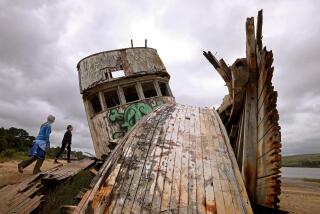The fight to save the last pieces of the historic Japanese fishing village on Terminal Island

Months after the attack on Pearl Harbor, a Japanese American fishing community on San Pedro’s Terminal Island was given 48 hours to pack its belongings before it was forced into incarceration camps throughout the West. After the evacuation, most of its village was razed.
But for more than 80 years, two buildings have been left standing. Now, the original residents, their families and supporters have mobilized to protect the last vestiges of their history on Tuna Street.
Tim Yamamoto’s grandfather leased one of the buildings — a grocery store that fed the fishermen and cannery workers responsible for stocking places such as StarKist Tuna and Van Camp Seafood. The second building next door was a dry goods shop. Both are owned by the Port of Los Angeles.
When Yamamoto, 66, learned that the connected buildings may be demolished, he was compelled to take action in honor of his late parents, who grew up on Terminal Island and married at one of the incarceration camps.
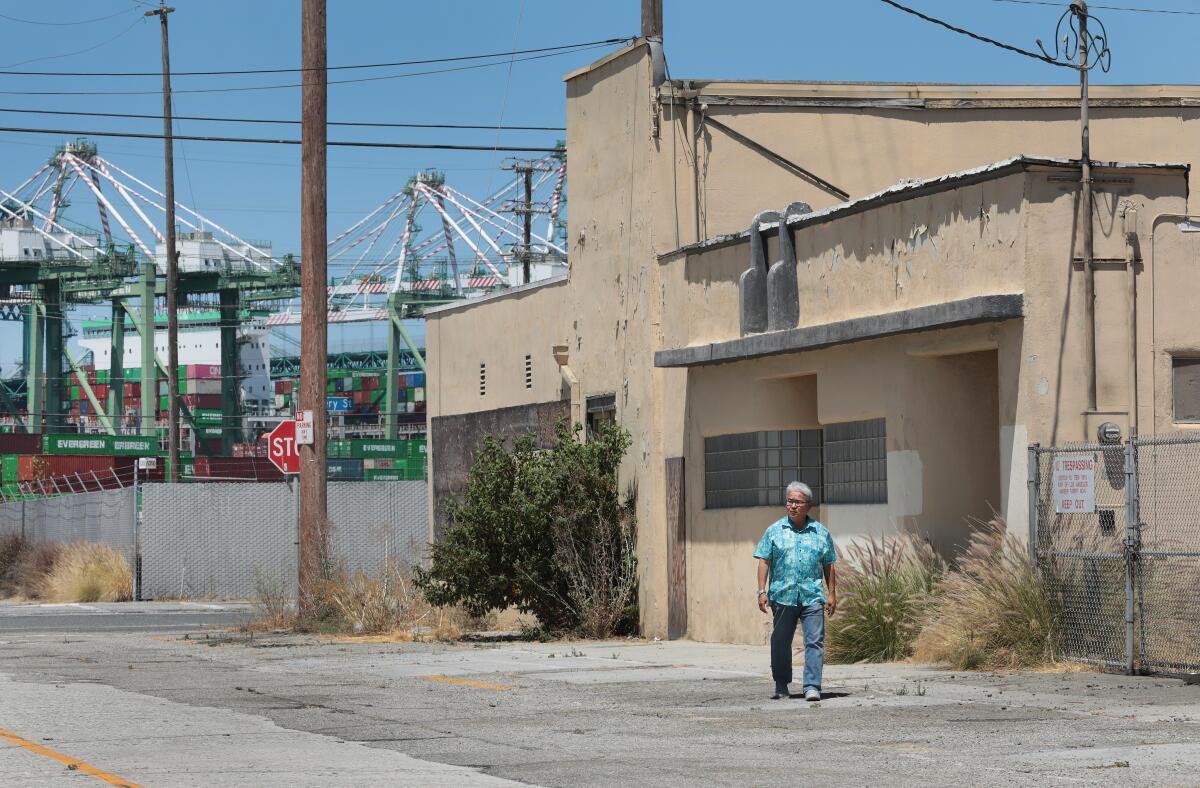
“Those buildings show that there was something here. If they are wiped out, then any trace of the Terminal Island history is gone,” he said. “I just want to do something to keep some kind of history alive.”
Members of the Terminal Islanders club — a group of nearly 200 people that Yamamoto belongs to — learned of possible plans for the buildings when a local San Pedro resident spotted workers inspecting the area. Yamamoto and others rallied to make their case to the harbor commissioners to save the site. While some port leaders were sympathetic to the cause, Terminal Islanders members have said the group has not yet received any specific information about the port’s intentions. The news about the possible demolition was first reported in Random Lengths News — a local news magazine in San Pedro.
The Port told The Times that there are currently no formal plans or timeline to change the buildings, but that there have been “internal staff discussions about the long-term future of the buildings, including the possibility of demolition.”
“Any changes to the site would go thorough a formal and public process, including input from the public and a vote by the Los Angeles Harbor Commission. Input from the Terminal Islanders group would be critical to any process involving change at the site,” Port of Los Angeles spokesperson Phillip Sanfield said.
Harbor Commission President Lucille Roybal-Allard, L.A. Councilman Tim McOsker and port leaders plan to visit the buildings during the first week of September, Sanfield said, before the port arranges a meeting with Terminal Islanders representatives.
“Our top priority on this issue [is] to gather input and ideas directly from the Terminal Islanders group for the future of the site,” Sanfield said.
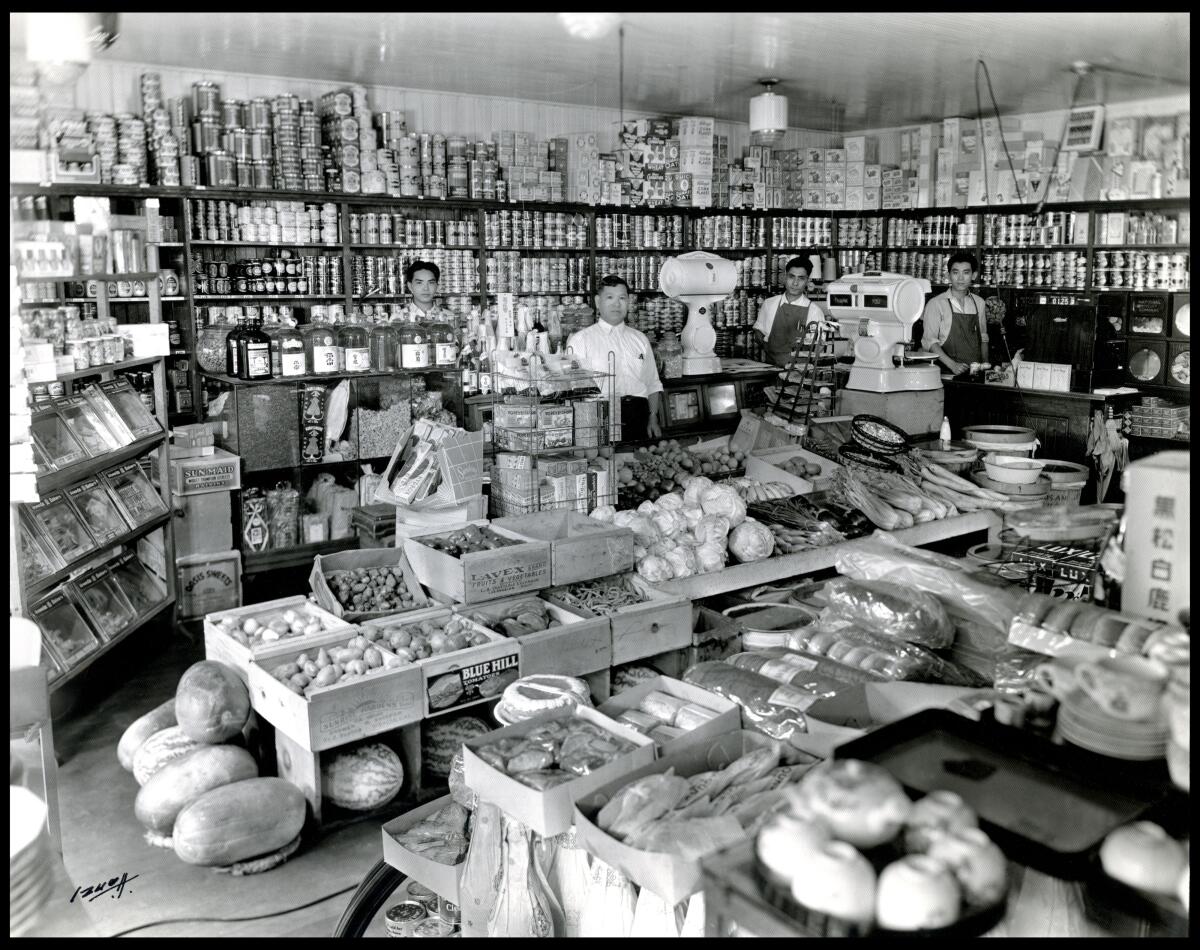
As shipping forecasts have grown at one of the world’s busiest seaports, officials have allocated hundreds of millions of dollars for storage and rail yard expansion, restoration and electrification projects, among others. One $18.2-million demolition project that’s in the design phase at Terminal Island would clear the land near the old StarKist cannery and make it available for lease. The area is about a mile from the Tuna Street buildings.
The Terminal Islanders club is working with the Los Angeles Conservancy and the National Trust for Historic Preservation to try to get a historic designation for the buildings before any plans are set, Terminal Islanders board member Paul Boyea said. And nearly 1,000 people have signed an online and physical petition to prevent possible destruction.
“We want to protect the legacy of the Terminal Islanders,” Boyea said. “We don’t want to just preserve [the buildings] — we want to restore them, we want to rehabilitate them. Maybe there’s a different end use for the buildings. There’s a lot of different things that can be done.”
Boyea and others have discussed the possibility of turning the buildings into a museum, art installation or, if possible, relocating them.
Today, paint peels at the top of the boarded-up buildings and stray cats wander outside on the desolate street. A “No Trespassing” sign from the Port of Los Angeles is posted to the wall and empty beer cans that have been run over by cars litter the ground. Across the gravelly road is a massive lot that stores container boxes. Next door is a now-closed Korean mini mart, and more than 100 yards down the street is the water’s edge. Trucks, cranes and more shipping containers fill the backdrop.
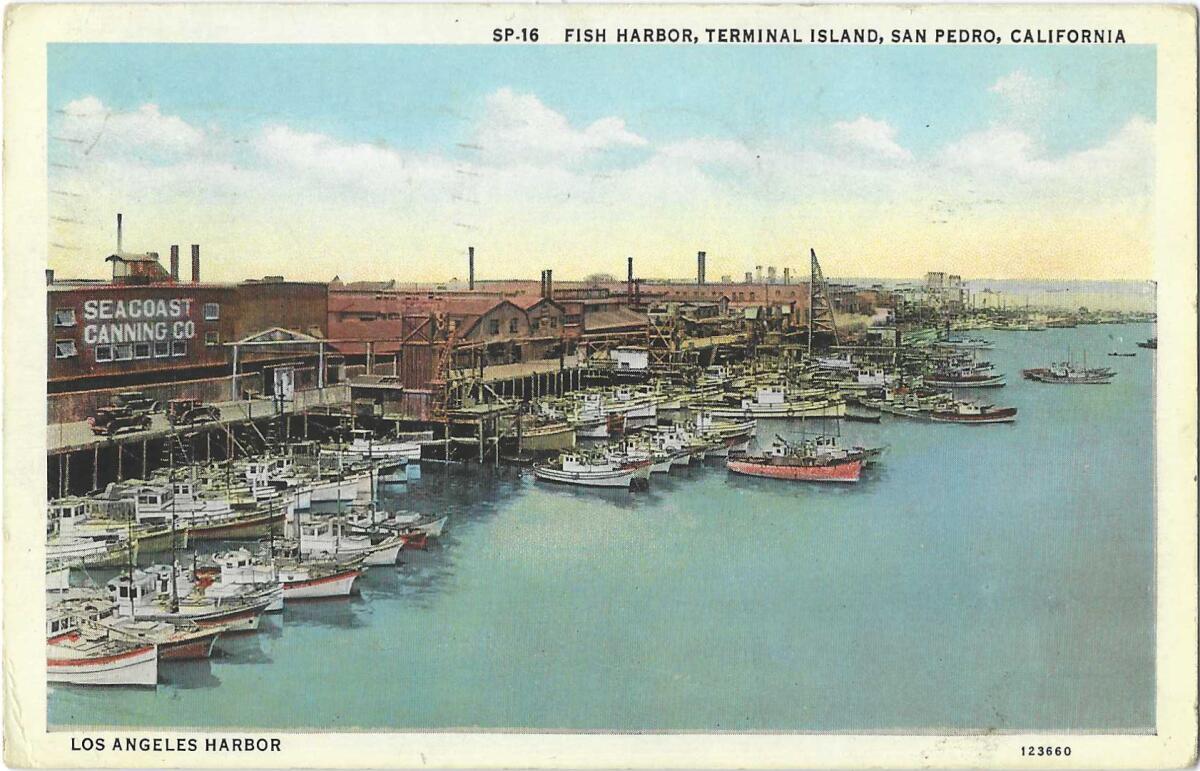
What’s left of the Terminal Island village is a stark contrast to what once was a bustling village of about 3,000 people and the backbone to the fishing industry from the turn of the last century to World War II. Cannery workers listened for the sound of whistles that signaled boats coming in with the day’s catch. The area was filled with storefronts and homes, a Japanese gate that graced the entrance to a Shinto shrine, a Buddhist temple, a Baptist church, a bank, a school and halls for people to gather for meetings and celebrations. Tuna Street was considered the central shopping area.
According to the Los Angeles Conservancy, a 1917 article in Pacific Fisherman said “the Japanese taught the Americans and all the others how to catch tuna in commercial quantities and they are the best fishermen in the game. As a result, the packers vie with each other in providing them with attractive quarters close to their respective plants.”
Miho Shiroishi, 91, was born on the island in the 1930s. She still drives to the area simply to remember life before the war. Her mother and four siblings were forced into a camp when she was 9 while her father was forced into another. When she returned, her home on Cannery Street no longer existed. But at least the streets, she said, remained.
“I’m going to be 92 this year in November, but I’m still able to drive. So I go to Terminal Island as often as I can,” Shiroishi said. “Without [the two buildings], what do you have? Nothing.”
The president of the Terminal Islanders Club and one of Yamamoto’s friends from kindergarten, Terry Hara, said that plans for the buildings’ future should be a collaboration of ideas “with everybody’s best interest at heart.”
Hara, who was the first Asian American promoted to captain at the Los Angeles Police Department in 1998 and whose parents lived on Terminal Island, said that he and others believe that preserving history is key to educating people about the past.
“This particular location is small in the scale of historical experiences of the Japanese Americans, but it’s an important part and it’s where you learn about the tuna industry. It began in Los Angeles,” Hara said about the industry that relied heavily on fishing techniques brought from Japan. “It plays an important role in educating those that will come after us.”
Alice Nagano, 90, was 7 when her family was forced from Terminal Island and sent to the Manzanar relocation center in Inyo County. She said her childhood memories of her first home are limited, but she recalls that the tight-knit community felt safe enough to sleep with their doors unlocked.
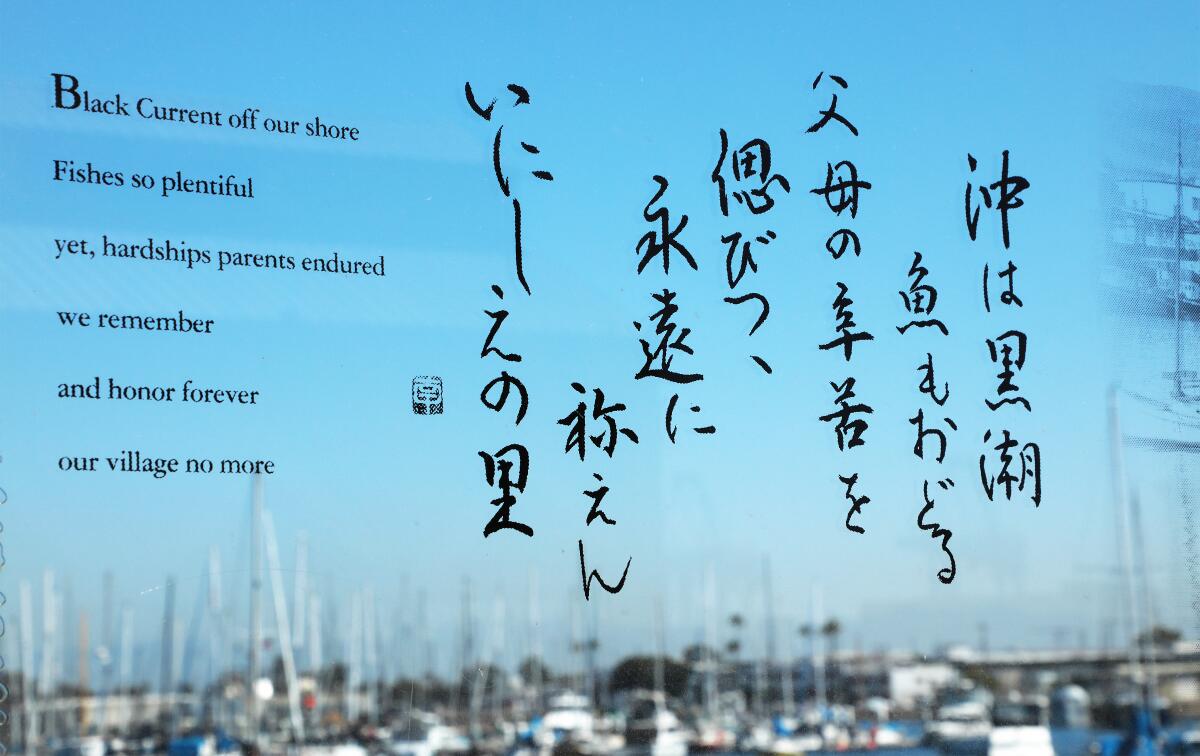
“If we have those buildings there, at least it’ll show that we had a community,” she said. “If they get demolished, there’s nothing there to remind anybody.”
There’s a memorial for Terminal Island about a mile away from Tuna Street, not far from the federal prison. Two bronze fishermen sit atop a time capsule from 2002 and the names of Terminal Islanders are etched into a surrounding wall. A drawing of the old village lays across glass, giving people the chance to imagine what once was. And a poem honors “our village no more.”
A brief history of the town accompanies prints of black and white photos — old homes, parades, the local hardware shop and Yamamoto’s grandfather and his old grocery store.
“My parents are gone now and there’s really just a little over a handful of original members left,” Yamamoto reflected. “I didn’t think much of it when I was younger, but now, I think I have a little responsibility to carry on their memory and history.”
More to Read
Sign up for Essential California
The most important California stories and recommendations in your inbox every morning.
You may occasionally receive promotional content from the Los Angeles Times.


